The Vintage Singer Featherweight: What’s All the Hype?
Discerning sewers covet this machine.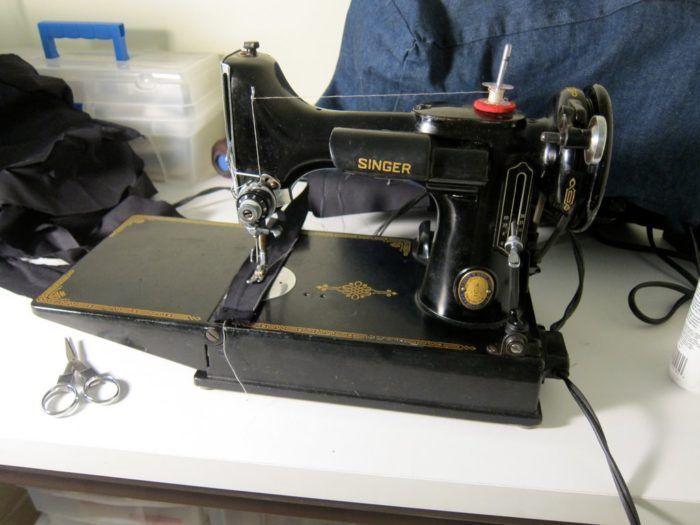
I learned to sew exclusively on vintage sewing machines and realized almost immediately that one machine was not going to be enough for me. It seems I was born with the collector’s gene. One of the machines I heard people raving most about on blogs and sewing community sites like PatternReview.com was the Singer Featherweight, also known as the Singer 221.
It took a few years before I finally succumbed to the Featherweight fever—could they really be so special, I wondered? I found my first Singer Featherweight on eBay. Little did I realize at the time it wouldn’t be my last.
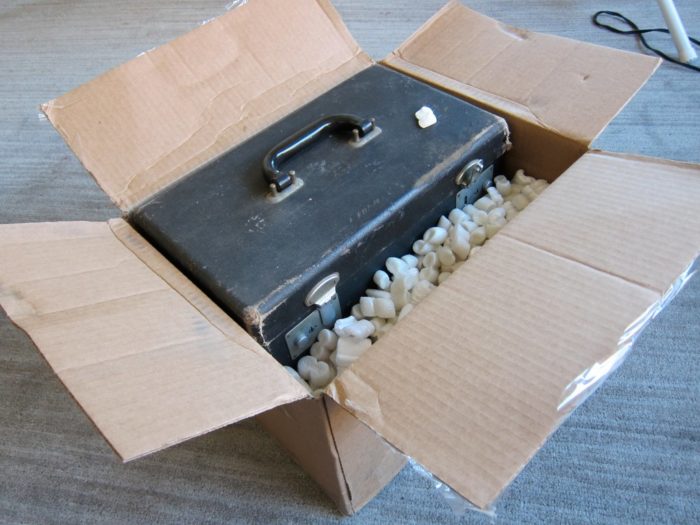

When discussing the popularity of Featherweights, we mustn’t overlook the “cute” factor. What is it about small versions of big things that so many people find charming? It’s not just sewing machines, think teacup Chihuahuas and dollhouses. Perhaps they remind us of being little ourselves.
Benefits of the Singer Featherweight
The Singer Featherweight is admired and sought after for a number of other reasons besides its diminutive size.
The Featherweight is splendidly designed and constructed. A half-size machine made from aluminum, it weighs slightly more than 11 pounds. It uses the same low-shank feet and accessories as full-size Singer sewing machines, and comes with its own carrying case for easy transport and storage.
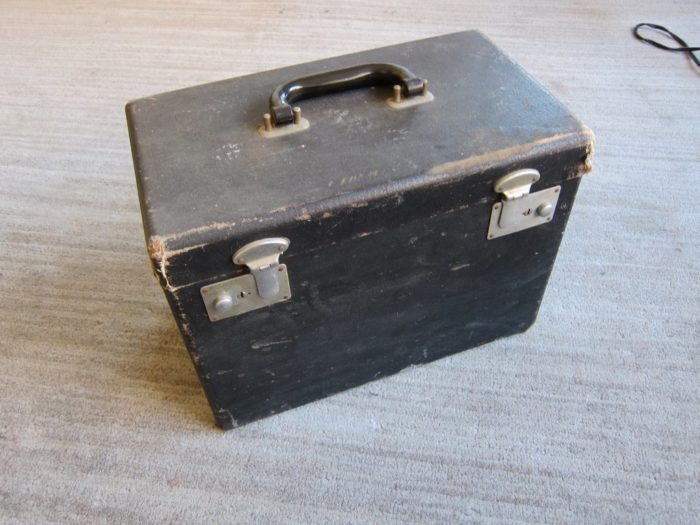
The Featherweight is also powerful. Despite sporting a 0.4-amp motor, it’s capable of everything a full-size vintage straight-stitch sewing machine can do. Best of all, perhaps, is it’s virtually silent and extremely smooth. In fact, people who have never sewn with a Featherweight may be surprised how smooth and silent a sewing machine can be. The Featherweight has excellent piercing power. It’s strong enough for making jeans and sensitive enough for sewing through silk chiffon—with a different needle, of course.
Manufactured from 1933 through 1968 without a major redesign, it had one of the longest runs of any sewing machine model. Only small refinements and variations were made over the decades. A free-arm version, the Singer 222, was manufactured in Clydebank, Scotland, though not for the American market. These are rare and sell for considerably more than the standard flatbed 221 model. As with any vintage Singer sewing machine, you can find its approximate date of production (and factory location) at the Singer Sewing Machine Serial Number Database.
If the Featherweight has one disadvantage, it’s the limited harp space (the working area to the right of the sewing needle), which means it’s not ideal for bulky projects like upholstery. It excels, however, at topstitching due in part to its straight stitch-only status. I’ve found it to be ideal for shirt-making.

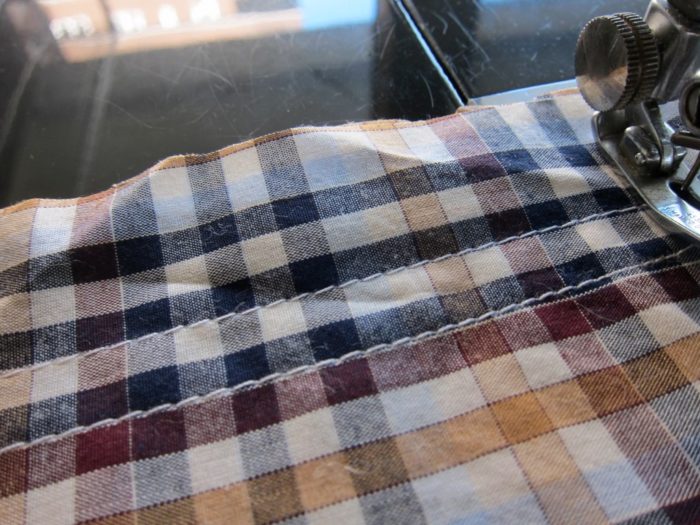
Due to the mechanical simplicity and high-quality construction and materials, Featherweights are easy to maintain at home. Regular oiling with sewing machine oil and delinting will address (and help to prevent) most problems. Annual tune-ups are not necessary.
The Featherweight’s feed dogs do not drop. If you’re using a Singer buttonholer, therefore, you will need to attach the feed dogs coverplate. Be sure the coverplate and coverplate screw are included if you’re buying a vintage Singer buttonholer to use on a Featherweight.
I have heard the Featherweight is especially popular among quilters. I suspect this is primarily because it’s a straight-stitch machine, and great for turning sharp corners and such, and it’s lightweight enough to transport to a quilting class.
Singer also sold a folding Featherweight table. I found one, believe it or not, in the trash and refinished it myself. It’s a special treasure to me.
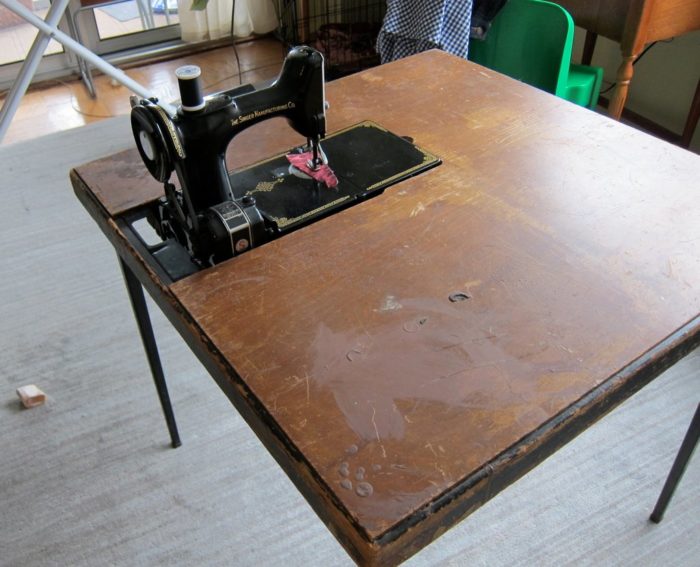
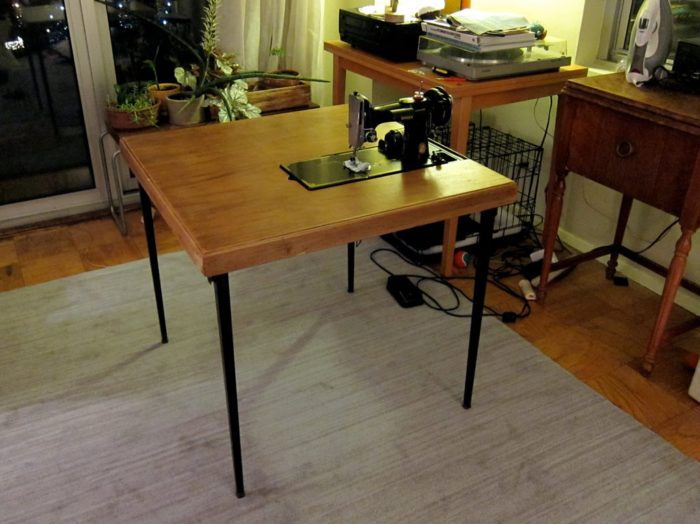
The Featherweight has a side-loading, rotary-hook bobbin and uses the same bobbin case as the Singer 301a, which is a later half-size slant machine.

While highly prized by collectors, the Featherweight is not a rare machine: Millions were manufactured and a great many are still in working order. Like many other Singer models, parts are still available and easily replaced.
Where to find a Featherweight
In New York City, we don’t have a large number of sewing machine repair shops, but those we do have often have reconditioned vintage sewing machines for sale. You may pay more for a Featherweight purchased here, but you’ll be assured that the machine is in working order. I’ve also seen Featherweights in antique shops and flea markets, sometimes in good working order and sometimes not.
Featherweights can most easily be found for sale on eBay. As with any eBay purchase of a vintage item, it is best to ask questions of the seller before bidding. Does the machine have any mechanical problems? Can you see a photo of a stitch sample? Are there any cosmetic defects not visible in the photos? (The seller should post many clear photos.) What is the condition of the wiring?
Buying on eBay is still a caveat emptor experience, so also check the seller’s feedback. Have they sold sewing machines before? Do they know how to pack them? Even if the Featherweight has its original carrying case, the machine should be packed with bubble wrap or similar packaging inside the case. There should be no loose items, particularly accessories, rattling around in the case. Ideally, any sewing machine should also be double-boxed.
No matter where you purchase your Featherweight, be sure the bobbin case is included because reproduction cases are largely shoddy and vintage originals, found mainly on eBay, are expensive. This is perhaps the part that, due to its small size, is commonly lost.
Singer has tried to resurrect the Featherweight name over the years (see photo below) but the machines never matched the original Featherweight’s quality. Clones have also been manufactured in China: It’s best to avoid them.
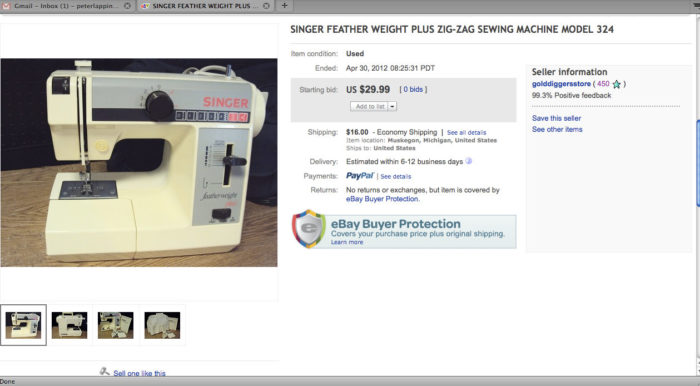
A fully operational Featherweight is, finally, a good investment. Much like a new car, a new sewing machine will lose much of its value as soon as you bring it home. Thanks to its popularity, a Singer Featherweight will retain its value for years to come.
But for the majority of us passionate vintage sewing machine collectors, it’s not about the investment, it’s the experience we value. And the joy of sewing on a Singer Featherweight is what it’s all about.
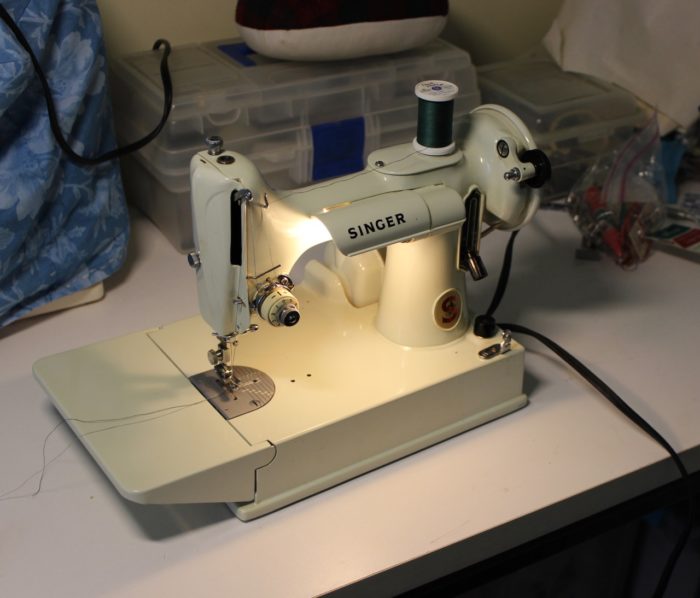
Learn more about vintage sewing machines and the benefits of a straight-stitch machine.


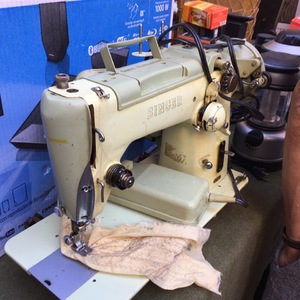

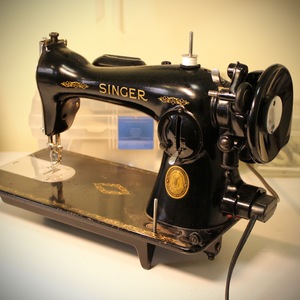

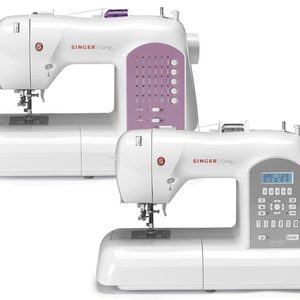

























Peter,
You are spot on (as usual), and as one of your blog followers, I enjoy when you demo techniques on your machines. The Featherweight is a gem, and fits in smartly with all the downsizing and right-sizing going on.
Not to get testy, but we simply don't hear from our Digital Ambassador enough.
Ooh, how I wish I had kept my Mom’s Featherweight. She continued to use it after she got a newer, fancier Singer machine. A wonder.
Quick note: The snapshot showing the bobbincase is not accurate. If this is is how the bobbincase was returned to the hook, it is not a working machine. The little handle on the bobbincase must be placed between the sections on the underside of the needle plate. Loose the screws, gently lift the plate, and then reslide the bobbincase back in so the little handle is positioned between the two L-shaped bars, then lower the plate to secure the position and tighten the screws. Remember that the Featherweight needle is in reverse to most machines, and therefore, you will have to put your bobbin in the case COUNTERCLOCKWISE. I repair, service, and train new owners in how to work with their Featherweights -- I even sold one of our refurbished models with a table and know exactly how great an investment these durable little units can be!
I have both my mother's featherweight and table as well as an aunt's. I learned to sew on my mother's machine. No matter the place we lived at the table and machine were always set up. With 6 kids and living/working on a farm there were always things to repair and new clothes to sew.
When I was sewing costumes in high school the machine was small enough that I set it on the heater that poked out from the wall in the hallway outside the stage and sewed between times that I was needed on stage for rehearsal.
Featherweights are true workhorses!
I love my 1941 Featherweight. I purchased the Arrow Heavyweight sewing table made for Featherweights so she has her own place. She shines just as brightly and works just as hard as my computerized BabyLock Crescendo. I use her for piecing and she comes in handy for sewing repairs or alterations if I have a quilt in the Crescendo.
It is such fun to see the pictures of the Feather Weights. That first pic in the article looks so much like what I had. I won it in a Singer Sewing contest in the summer of 1953 when I was age 15. The local contest gave me a zippered scissors set [which I still have], the next level of the contest gave me a four drawer sewing cabinet [which I still have], and in the last level I won the Feather Weight in covered wood carry case and the slide-out opening table. I still have the table which has never been refinished but in better shape than your picture of the one previous to it's refinishing. The machine was traded in for a new Singer in 1965 but they let me keep the table. Trading it was one of the regrets of my life. I used it to make my wedding gown in my college dorm room in 1960.
My Featherweight was a high school graduation present so that I could go off to college with a sewing machine. The wood table was included. Over the next several years I purchased all the attachments. My engineer father maintained in perfect condition both Mother's and my sewing machines until his death. After my granny died, hers from the 1930s came to me. Lucky me! About 2013 I bought a Baby Lock sewing and embroidery machine but continued to use the old Featherweight machine(s). I used my Featherweight from 1959 until the 2017 California wildfire that destroyed everything. Since then I've replaced the Featherweight and a highly recommended very useful metal table that is nice but not as large as the old Featherweight table, a new model Baby Lock, and a Baby Lock serger. Baring another disaster these will happily last the rest of my life. I rather expect that the Featherweight will outlast the Baby Lock. The whole point of this is that if I could have only one machine, it would be the Featherweight which has made clothes, doll clothes, stuffed toys, quilt tops, hems on purchased clothing, curtains. It won't embroider and isn't large enough to quilt, but it is a happy hold onto forever machine. Should you inherit one, you will be a very fortunate seamstress/sewer.
Thanks -- that's a great story. So glad you've stuck with Featherweights all these years!
I have been told by several quilters who are active RV’ers that this 221 is ideal for an RV! Especially if there are solar panels on the RV. The 221 has a very low draw on electrical sources like solar. One can sew most all day on a sunny day, and about 6 hours on a cloudy day. The 221 has Only a.4 amps on its motor.
I just purchased a Featherweight 221. It was completely random and unexpected. We happened on a perfect condition Featherweight in a shop. I usually look for sewing patterns and other bits and bobs in vintage shoppes and as we were paying for the patterns the lady mentioned she had a Featherweight and would I like to see it. Well, I knew then it was going home with us.
I cleaned it up yesterday and plan to get a few bobbins and a new belt but otherwise, I think one of the vintage patterns I found should be the first project.
Glad this mentioned the buttonhole as I do also plan to purchase one of those as well. The machine has all it’s original accessories, so quite pleased with this lucky find.
I am brand New to Threads…I “learned” to sew on an Singer treadle at Granny’s, really learned on a Singer ‘40’s console and still have and use my talented mother’s 1963mint green Featherweight with all of the attachments! She got it as a maternity gift when I was born. I had no idea this little gem was so popular. I have always loved it even though a have very modern serger and embroidery cum sewing. Nothing beats this little engine that could and can!
I've been collecting sewing machines for a while (I have 32), and was very happy when I found a Featherweight for sale at an Antique show that was in great shape and had all of its attachments. The Singer buttonhole attachment makes better buttonholes than my modern computerized machines. The buttonhole attachment only "failed" on me once ~ and that was my fault because I forgot to put the stitchplate cover on before trying to sew the buttonhole. Needless to say, I learned exactly why that plate was necessary (it's not just to cover the feed dogs ~ the attachment is designed to sit higher than ordinary sewing feet to provide room for that cover and if the cover is not there, the foot won't be able to properly move the fabric, resulting in a big mess of tangled thread.). I now have a small post-it note in my buttonhole attachment box that says, "use stitchplate cover!" to ensure I never forget about it again.
I’ve been collecting many vintage machines like Singer 66, Kenmore 158.1040 and recently the Singer 201 all from secondhand stores. But never did one give me a swollen left eye like my “new” featherweight did that I got on eBay. I’m allergic to dust and mold and apparently the featherweight I received has been in its box for decades unused and stored away who knows where! I believe this maybe common as the seller would not have sold it in the first place! Thank goodness it’s a sunny day because I’m airing her out outside and especially that box!